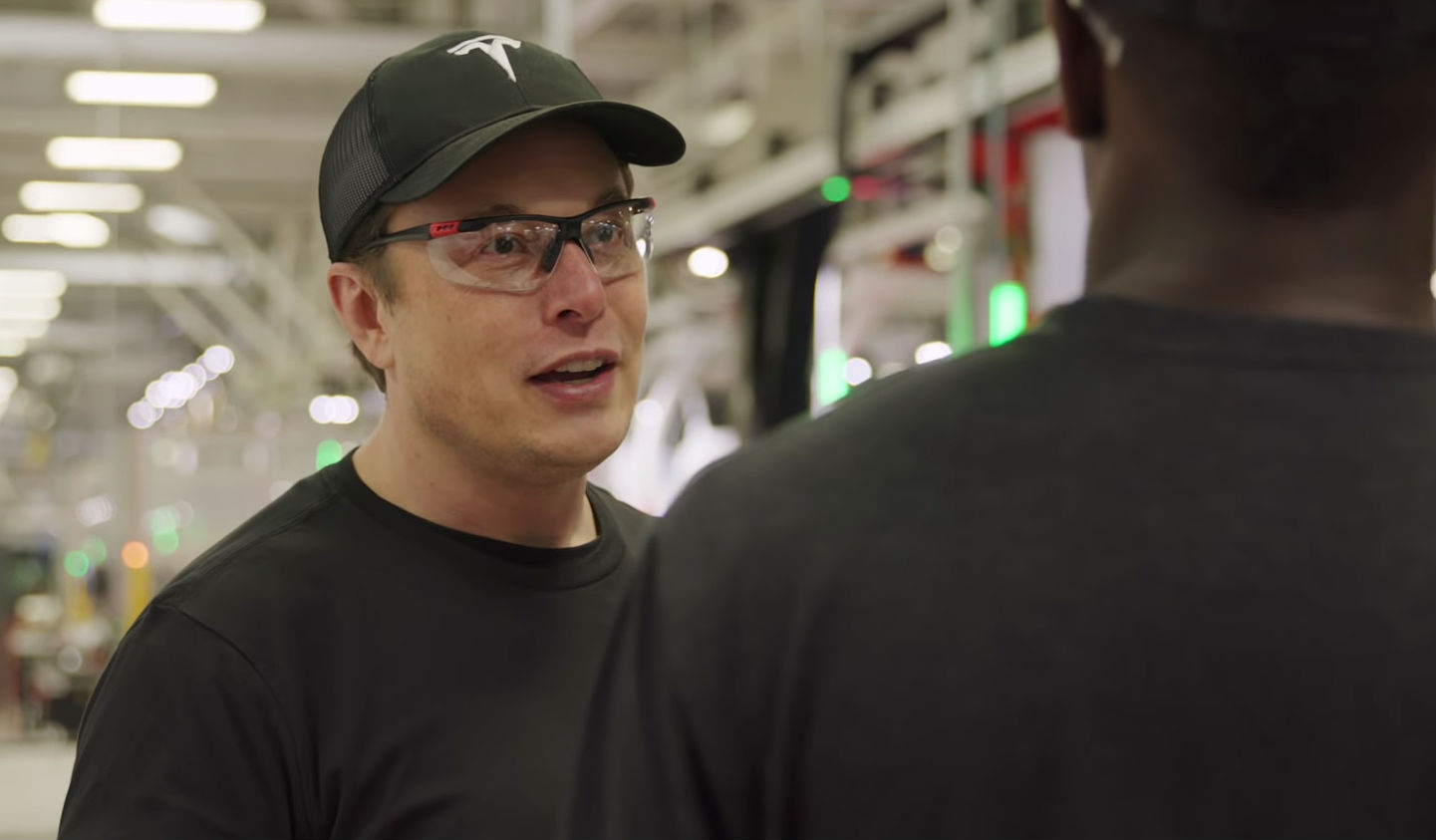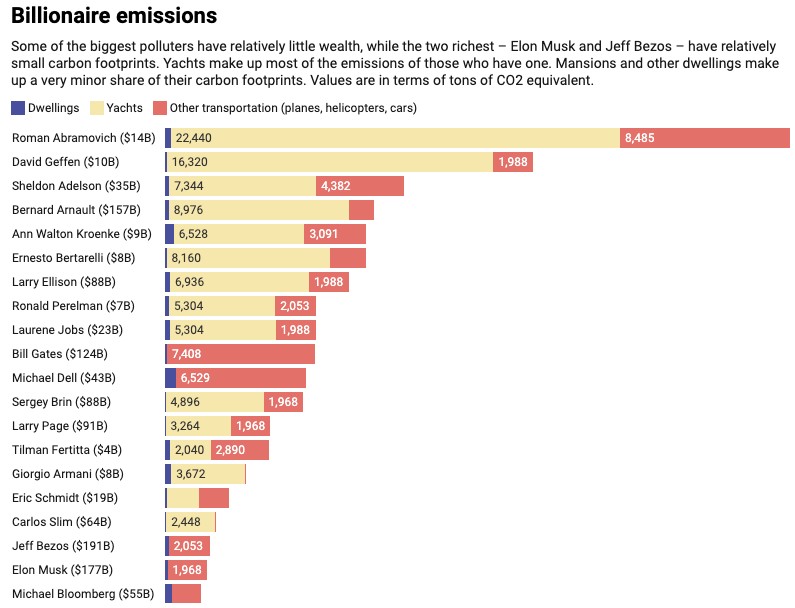

News
Elon Musk walks the walk by consuming far less carbon than other billionaires
Elon Musk may be trading places with Amazon founder Jeff Bezos these days for the title of the world’s richest person by net worth, but the Tesla and SpaceX CEO also holds a unique place among his fellow billionaires. Based on estimates from anthropologists from Indiana University, Elon Musk may very well be one of the billionaires with the smallest carbon footprint.
Critics of Elon Musk would argue that the Tesla and SpaceX CEO’s carbon footprint is excessive due to his frequent travels with his private jet. However, Richard Wilk, the director of the Open Anthropology Institute at Indiana University, and Beatriz Barros, a Ph.D. candidate in anthropology at Indiana University, noted in an analysis that Musk’s carbon footprint is actually quite small relative to his fellow billionaires. This is because, unlike other billionaires, Musk owns no luxury superyachts or custom-made, sprawling mansions.

Wilk and Barros opted to analyze a number of billionaires from the 2020 Forbes List, particularly those whose consumption is public knowledge. This excluded a good number of the super-rich in Asia and the Middle-East, but it still provided a good sample of billionaires from across the globe. To estimate each billionaire’s carbon footprint, the anthropologists used data from the US Energy Information Administration and Carbon Footprint. Together with some extensive research, this allowed the pair to estimate the annual CO2 emissions of each house, aircraft, yacht, and vehicle publicly declared by each billionaire.
On average, US residents pollute about 15 tons of CO2 per year as of 2018, though the average global footprint per person is smaller at just about 5 tons annually. The 20 billionaires who were included in the study, for their part, contributed an average of 8,190 tons of CO2 in 2018. But even among this list, some billionaires polluted significantly more than others. And as it turned out, those who owned massive luxury yachts tend to consume significantly more than those who did not.
Roman Abramovich, the owner of London’s Chelsea Football Club and a man who made most of his $19 billion fortune trading oil and gas, proved to be the biggest polluter in the anthropologists’ list with at least 33,859 metric tons of CO2 emissions in 2018. This is due in no small part to his luxury superyacht, the Eclipse, which at 162.5 meters bow to stern is practically a small, private cruise ship. He also travels across the globe in a custom-designed Boeing 767 with a 30-seat dining room, as well as his Gulfstream G650 jet. Abramovich also uses two helicopters and a submarine on his yacht. On top of this, the oil and gas magnate boasts several properties, such as a 28-hectare estate in St. Barts that once belonged to David Rockefeller.
Bill Gates, a huge advocate for sustainability, consumes far less carbon than Abramovich, but his emissions still tower over those of Elon Musk. Gates maintains a $127 million estate in Medina, Washington named Xanadu, which covers 6,131 square meters and amenities like a 23-car garage, a 20-person cinema, and 24 bathrooms. Gates also owns a horse farm, four private jets, a seaplane, and several helicopters. The anthropologists estimate that Gates’ annual carbon footprint stands at 7,493 tons, mostly due to his flying.
For his part, Elon Musk owns no yachts, and the CEO has noted that he does not take many vacations. The Tesla and SpaceX CEO was estimated to have a rather billionaire-modest carbon footprint of 2,084 tons in 2018, which was hundreds of times higher than the average American but significantly smaller than his fellow billionaires. Interestingly enough, Musk’s carbon footprint may have also gotten considerably lower as of late, considering that he sold all of his houses in 2020 and he promised to divest his worldly possessions. Ultimately, Musk, who is currently worth about $190 billion or ten times that of billionaires like Abramovich, proves that even the super-rich can make choices to ensure that they live as sustainably as possible.
Read Wilk and Barros’ analysis of billionaires’ carbon footprint here.
Don’t hesitate to contact us for news tips. Just send a message to tips@teslarati.com to give us a heads up.

News
Elon Musk’s Grokipedia surges to 5.6M articles, almost 79% of English Wikipedia
The explosive growth marks a major milestone for the AI-powered online encyclopedia, which was launched by Elon Musk’s xAI just months ago.

Elon Musk’s Grokipedia has grown to an impressive 5,615,201 articles as of today, closing in on 79% of the English Wikipedia’s current total of 7,119,376 articles.
The explosive growth marks a major milestone for the AI-powered online encyclopedia, which was launched by Elon Musk’s xAI just months ago. Needless to say, it would only be a matter of time before Grokipedia exceeds English Wikipedia in sheer volume.
Grokipedia’s rapid growth
xAI’s vision for Grokipedia emphasizes neutrality, while Grok’s reasoning capabilities allow for fast drafting and fact-checking. When Elon Musk announced the initiative in late September 2025, he noted that Grokipedia would be an improvement to Wikipedia because it would be designed to avoid bias.
At the time, Musk noted that Grokipedia “is a necessary step towards the xAI goal of understanding the Universe.”
Grokipedia was launched in late October, and while xAI was careful to list it only as Version 0.1 at the time, the online encyclopedia immediately earned praise. Wikipedia co-founder Larry Sanger highlighted the project’s innovative approach, noting how it leverages AI to fill knowledge gaps and enable rapid updates. Netizens also observed how Grokipedia tends to present articles in a more objective manner compared to Wikipedia, which is edited by humans.
Elon Musk’s ambitious plans
With 5,615,201 total articles, Grokipedia has now grown to almost 79% of English Wikipedia’s article base. This is incredibly quick, though Grokipedia remains text-only for now. xAI, for its part, has now updated the online encyclopedia’s iteration to v0.2.
Elon Musk has shared bold ideas for Grokipedia, including sending a record of the entire knowledge base to space as part of xAI’s mission to preserve and expand human understanding. At some point, Musk stated that Grokipedia will be renamed to Encyclopedia Galactica, and it will be sent to the cosmos.
“When Grokipedia is good enough (long way to go), we will change the name to Encyclopedia Galactica. It will be an open source distillation of all knowledge, including audio, images and video. Join xAI to help build the sci-fi version of the Library of Alexandria!” Musk wrote, adding in a later post that “Copies will be etched in stone and sent to the Moon, Mars and beyond. This time, it will not be lost.”
News
Tesla Model 3 becomes Netherlands’ best-selling used EV in 2025
More than one in ten second-hand electric cars sold in the country last year was a Tesla Model 3.

The Tesla Model 3 became the most popular used electric car in the Netherlands in 2025, cementing its dominance well beyond the country’s new-car market.
After years at the top of Dutch EV sales charts, the Model 3 now leads the country’s second-hand EV market by a wide margin, as record used-car purchases pushed electric vehicles further into the mainstream.
Model 3 takes a commanding lead
The Netherlands recorded more than 2.1 million used car sales last year, the highest level on record. Of those, roughly 4.8%, or about 102,000 vehicles, were electric. Within that growing segment, the Tesla Model 3 stood far ahead of its competitors.
In 2025 alone, 11,338 used Model 3s changed hands, giving the car an 11.1% share of the country’s entire used EV market. That means more than one in ten second-hand electric cars sold in the country last year was a Tesla Model 3, Auto Week Netherlands reported. The scale of its lead is striking: the gap between the Model 3 and the second-place finisher, the Volkswagen ID3, is more than 6,700 vehicles.
Rivals trail as residual values shape rankings
The Volkswagen ID.3 ranked a distant second, with 4,595 used units sold and a 4.5% market share. Close behind was the Audi e-tron, which placed third with 4,236 registrations. As noted by Auto Week Netherlands, relatively low residual values likely boosted the e-tron’s appeal in the used market, despite its higher original price.
Other strong performers included the Kia Niro, the Tesla Model Y, and the Hyundai Kona, highlighting continued demand for compact and midsize electric vehicles with proven range and reliability. No other model, however, came close to matching the Model 3’s scale or market presence.
News
Tesla Model Y Standard Long Range RWD launches in Europe
The update was announced by Tesla Europe & Middle East in a post on its official social media account on X.

Tesla has expanded the Model Y lineup in Europe with the introduction of the Standard Long Range RWD variant, which offers an impressive 657 km of WLTP range.
The update was announced by Tesla Europe & Middle East in a post on its official social media account on X.
Model Y Standard Long Range RWD Details
Tesla Europe & Middle East highlighted some of the Model Y Standard Long Range RWD’s most notable specs, from its 657 km of WLTP range to its 2,118 liters of cargo volume. More importantly, Tesla also noted that the newly released variant only consumes 12.7 kWh per 100 km, making it the most efficient Model Y to date.
The Model Y Standard provides a lower entry point for consumers who wish to enter the Tesla ecosystem at the lowest possible price. While the Model 3 Standard is still more affordable, some consumers might prefer the Model Y Standard due to its larger size and crossover form factor. The fact that the Model Y Standard is equipped with Tesla’s AI4 computer also makes it ready for FSD’s eventual rollout to the region.
Top Gear’s Model Y Standard review
Top Gear‘s recent review of the Tesla Model Y Standard highlighted some of the vehicle’s most notable features, such as its impressive real-world range, stellar infotainment system, and spacious interior. As per the publication, the Model Y Standard still retains a lot of what makes Tesla’s vehicles well-rounded, even if it’s been equipped with a simplified interior.
Top Gear compared the Model Y Standard to its rivals in the same segment. “The introduction of the Standard trim brings the Model Y in line with the entry price of most of its closest competition. In fact, it’s actually cheaper than a Peugeot e-3008 and costs £5k less than an entry-level Audi Q4 e-tron. It also makes the Ford Mustang Mach-E look a little short with its higher entry price and worse range,” the publication wrote.








